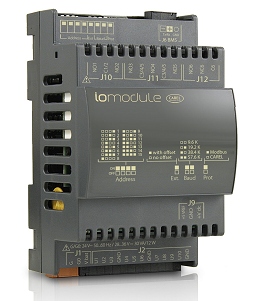The CAREL io.module is a data acquisition module designed for collecting data such as temperatures, pressures, digital inputs, etc.. and sharing them to supervision systems, for managing more efficiently your system, avoiding machine downtime and other problems.
Features:
- Reduced footprint, only 4 DIN modules
- 4 temperature inputs configurable as NTC or PT1000,
- 4 digital inputs,
- 2 probe type inputs settable as 4..20mA, 0..5V or 0..10V,
- 6 electromechanical relays,
- Serial communication with Carel or Modbus protocols.
For more details, see the relative tecnical sheet.


